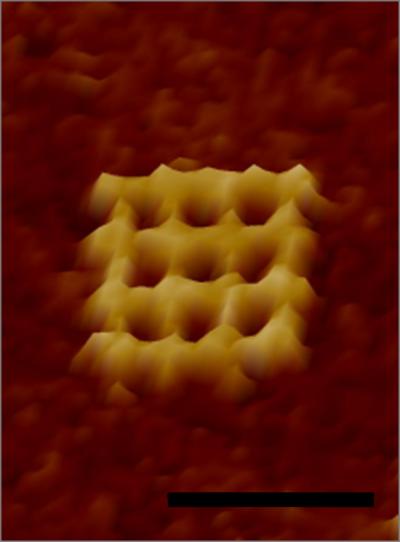DNA could be scaffolding for self-assembling chips
May 12, 2010
By simply mixing customized snippets of DNA and other molecules, one can create billions of identical self-assembling nanostructures, Chris Dwyer, assistant professor of electrical and computer engineering at Duke University, has demonstrated.
When different light-sensitive molecules are added to the mixture of nanostructures, they exhibit unique programmable properties that can be readily tapped. Using light to excite these molecules, known as chromophores, he can create simple logic gates.
These nanostructures can be used as the building blocks for a variety of applications, ranging from biomedical devices to computer elements.
“When light is shined on the chromophores, they absorb it, exciting the electrons,” Dwyer said. “The energy released passes to a different type of chromophore nearby that absorbs the energy and then emits light of a different wavelength. That difference means this output light can be easily differentiated from the input light, using a detector.”
Instead of conventional circuits using electrical current to rapidly switch between zeros or ones, or to yes and no, light can be used to stimulate similar responses from the DNA-based switches – and much faster.
Since these nanostructures are basically sensors, many biomedical applications are possible. Tiny nanostructures could be built that could respond to different proteins that are markers for disease in a single drop of blood.
Dwyer’s research is supported by the National Science Foundation, the Air Force Research Laboratory, the Defense Advanced Research Projects Agency and the Army Research Office.
More info: Duke University news
